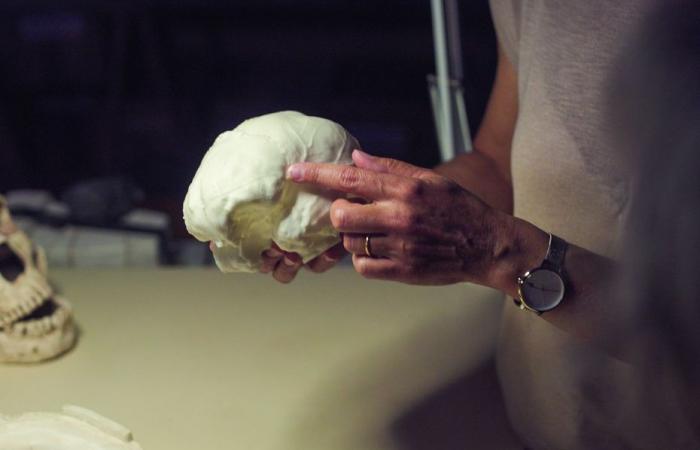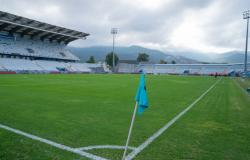The site of Tautavel, near Perpignan, is one of the most important archaeological sites in Europe, offering a fascinating insight into the lives of early humans in Europe. A documentary broadcast on France 5 and a book tell us about this extraordinary discovery.
The essentials of the day: our exclusive selection
Every day, our editorial team reserves the best regional news for you. A selection just for you, to stay in touch with your regions.
France Télévisions uses your email address to send you the newsletter “The essentials of the day: our exclusive selection”. You can unsubscribe at any time via the link at the bottom of this newsletter. Our privacy policy
The Tautavel site, and more precisely the Caune de l’Arago, is one of the most emblematic places of prehistoric archeology in Europe. This cave, located near the village of Tautavel in the Pyrénées-Orientales, is perched 80 meters above the plain and overlooks the Verdouble river. It has become a real treasure for understanding our human origins.
On July 22, 1971, an exceptional discovery marked a turning point in the history of the cave: a 450,000-year-old human skull, nicknamed Arago 21, was unearthed. This fossil is then the oldest human face discovered in Europe. Associated with the species Homo heidelbergensis, it offers a unique insight into early Europeans.
In addition to human fossils, the Tautavel cave has yielded more than 400,000 objects, including cut stone tools. These discoveries make it possible to reconstruct their way of life and their environment. Scientists even used data from the excavations to create a virtual reconstruction of the Tautavel valley 550,000 years ago, identifying the animals and plants present at that time.
The Caune de l’Arago continues to be excavated and studied, providing valuable information on the history of early Europeans.
Emma Baus, director and Amélie Vialet, paleoanthropologist.
•
© JC MILHET / HANS LUCAS
In May 2023, Emma Baus sets down her camera in Tautavel. She works, among others, with the paleoanthropologist Amélie Vialet. The documentary will be broadcast on Thursday, November 28 at 8:50 p.m. on France 5. The book “ORIGINES, Tautavel, our long history before Neanderthal” (Editions Albin Michel) supports the documentary. It is enriched by very beautiful iconography.
Cover of the book “Origins, Tautavel our long history before Neanderthal”.
•
© Albin Michel
Paleoanthropologist: Amélie Vialet’s job consists of working on the fossilized remains of the skeleton of ancient humans. It tracks morphological change over time from early humans to today.
Does the Tautavel cave have an equivalent in the world?
Conditions are exceptional at Tautavel. There is little erosion even though there are fifteen meters of layers. And so the level of conservation is very good. The singularity of the site is also the long period which is covered between 700,000 years and 100,000 years. Afterwards, we need time to bring all this to light and at Tautavel, we benefit from 60 years of excavations, since the 1is April 1964. As we explore these levels with a brush, it does not go quickly, hence the interest in being able to work over the long term.
How is the Arago 21 skull, discovered in 1971, a major discovery?
The Neanderthals are buried in burials, this helps with conservation and they are discovered at the beginning of the 20sth century.
Before 1970, there were no discoveries on older periods. And then this discovery is one side, it is something very fragile because there are many hollow cavities and often it is not preserved. Faces for fossils, we ultimately have very few in the world. And this allowed a real face-to-face meeting with the man from Tautavel, with his humans from the past. For the collective imagination, we can imagine this ancestor of 500 000 ans.
This allowed a real face to face with the man from Tautavel, with his humans from the past. For the collective imagination, we can imagine this ancestor of 500 000 ans.
Amélie Vialet, paleoanthropologist
What the man from Tautavel looked like ?
These are human groups who lived at different times. Some at 450 000 years like Arago 21, others at 560 000 years, so they are not the same.
A little under 1.70m and around 80kg and beyond that, we can’t say much.
They went through ice ages, how did they survive?
We are around half a million years old. It’s very cold. Musk oxen and reindeer come down to the Mediterranean. What’s special about Tautavel is that we have no traces of fire control. There is no proof that they knew how to deliberately produce fire. It would have been the best defense against the cold.
They find refuge in the cave. They have a very meaty diet and therefore rich in protein which helps them fight and it is believed that they collected the skins to make furs but without sewing them. We have no record that they could make clothes.
You mention cannibalism…
We have all the arguments. There is context. The groups will bring back the animals they will consume and among these animals, there are humans. We observe the same acts of butchery on animals as on humans. As we know that with animals, the goal was to consume them, we can deduce that they consumed their fellow animals.
But I don’t think they would starve. I think it’s either out of opportunism, we have a death in our tribe, ultimately we consume it because we acquired it at a lower cost and it provides nutrients or it’s a very symbolic behavior, a ritual in relation to death. To pay homage to him, this is the way we proceed, to consume him, it is possible or for the group next door, a war trophy that we consume.
There is undoubtedly a symbolic thought, a system of representation around these practices but which completely escapes us. We have no evidence to support either hypothesis.
What do you expect from future research?
Archaeological research is often an unexpected gift. Many discoveries destabilize us. We let ourselves be guided by the fossils that we uncover and it is they that allow us to reconstruct evolution.
At Tautavel, what interested us was to continue the excavations to go to older levels. We are at 560,000 years and the objective is to go down to 700,000 because in this time interval, we have almost no other sites. The idea is to know who these humans are, the difference they have from those we know, at what rates morphological changes occur over time. Going further in time is very important to fill this gap.
400,000 objects have been cataloged since the start of excavations at Tautavel. When humans did not occupy the Tautavel cave, bears sometimes came to spend the winter there in hibernation.
•
© Tangerine Production
Why did you want to make a documentary on the man from Tautavel?
I am originally from the Pyrénées-Orientales. My whole family lives in Prades. I have known the story of the Tautavel man and the cave for a very long time. As a director of scientific films, I knew full well that there had never been one on the subject, it was still incredible.
How did you work ?
It’s a huge amount of research work. The idea of making the film was in 2017. Then in 2020, when I found myself stuck not being able to travel abroad, I said to myself: “it’s a shame, we have all the wealth near us. And so I spent a year exploring all the books and meeting a lot of people in Tautavel. I managed to convince a production company then France Télévisions in 2022. The actual writing of the film and the research took three years and the production itself one year.
What is the objective of this documentary?
Allow us to perceive what these most ancient humans could be in French alone and show everything we know about them. It was to make them as close to us as possible when we know so little about them.
Objective: to bring them as close as possible to us even though we know so little about them.
Emmas Baus, director
The idea was to see all the scientists who have been working at Tautavel for years. I worked hand in hand with Amélie Vialet who really took up the pen with me after being my scientific advisor and the main character in the film. It was really about putting them in the field and through all the research work they do, we have the sketch of the humans of Tautavel which are gradually taking shape. The filming was not difficult.
What’s crazy is that in Tautavel, we have a place that has been inhabited for tens and tens of thousands of years. Between 700,000 years ago and 400,000 years ago in Europe when Europe was subject to a glacial climate. Tautavel is a very, very rare place where we have proof of human life behavior that does not control fire in an icebox environment.
What is the contribution of the book compared to the TV documentary?
I did a lot of research and a film is only 90 minutes long. There’s a lot of stuff left on my computer and it’s so stupid. The idea was to publish a book that has the chance to rely on magnificent iconography and go beyond it.
All children from the age of 7-8 who have an interest in history, science or the past can see the film.
I finished the film a year ago. We started from scratch with Amélie to write the book. It’s an extension of the film. There is a desire to be much more exhaustive. It is a book that extends well beyond the Tautavel site. I would have liked to have had such a book when I was preparing my film. What interested me was to connect Tautavel with other European sites from the same period.
The general public is something that is very close to my heart. What interests me is really that we can make things understood. All children from the age of 7-8 who have an interest in history, science or the past can see the film. We did everything to make it accessible.
Tautavel: living in Europe before Neanderthal
Science grand format
Thursday November 28 at 9:05 p.m. on France 5 and on france.tv






